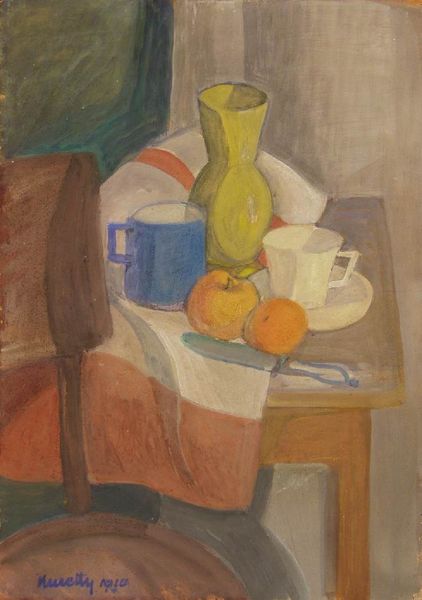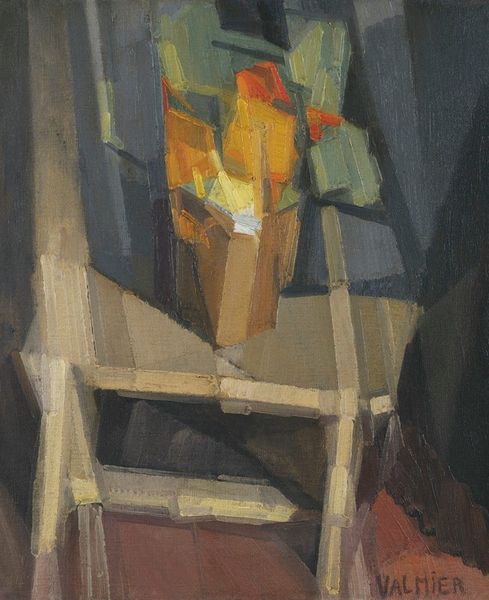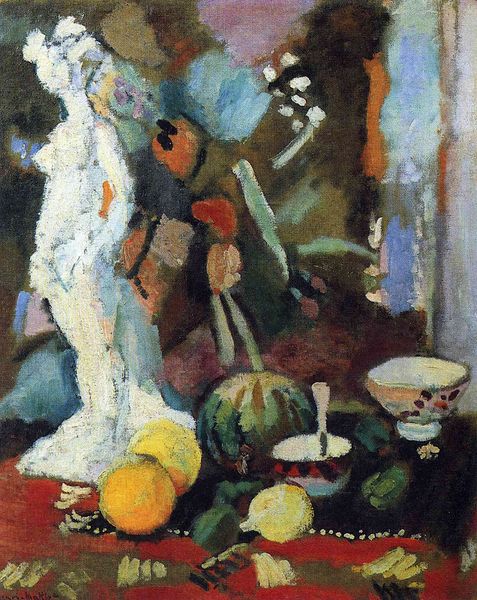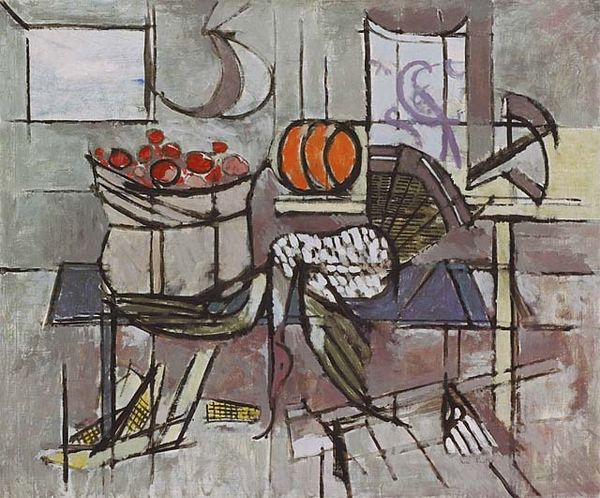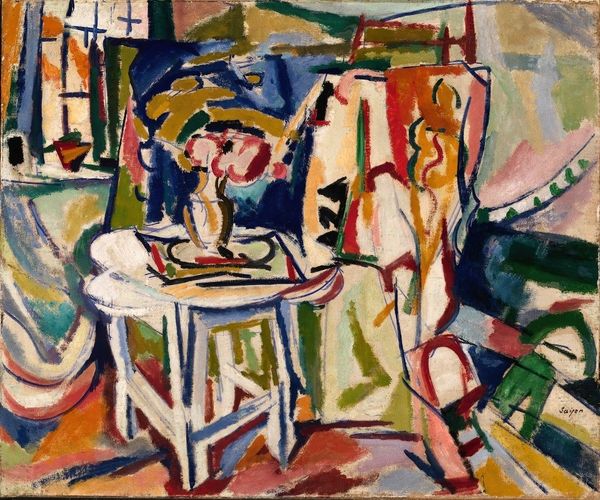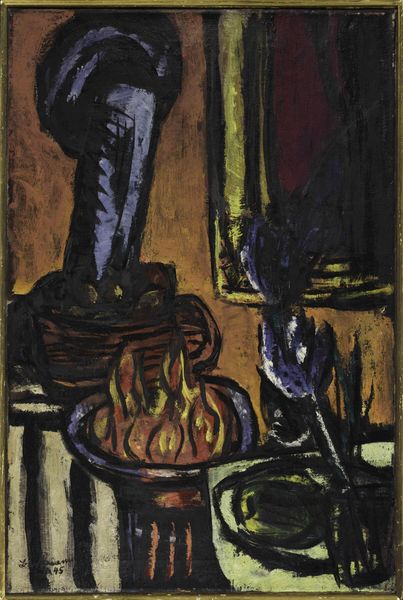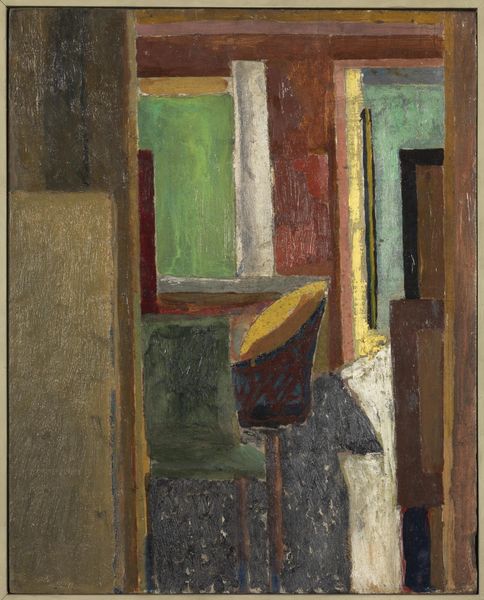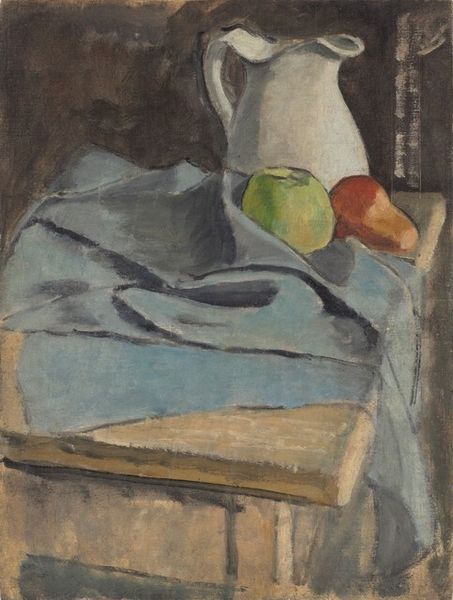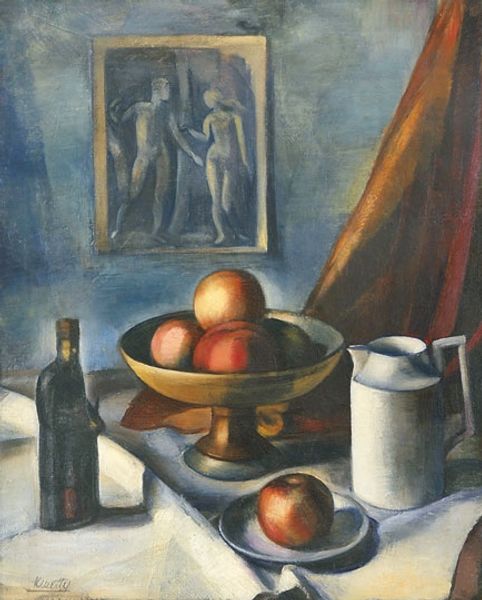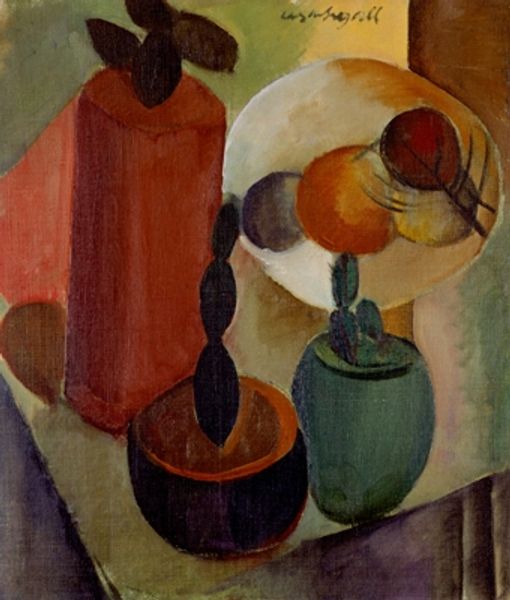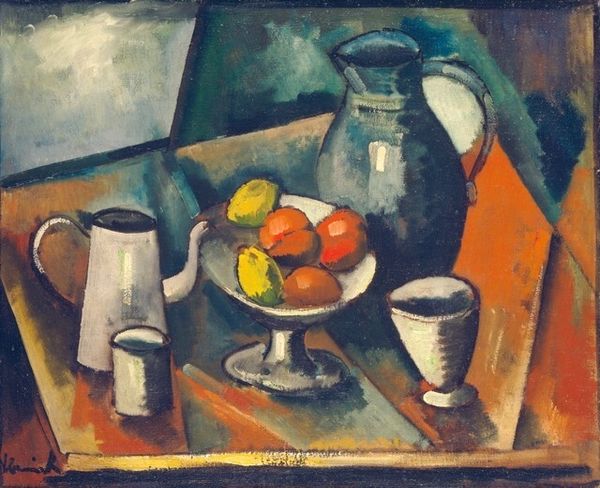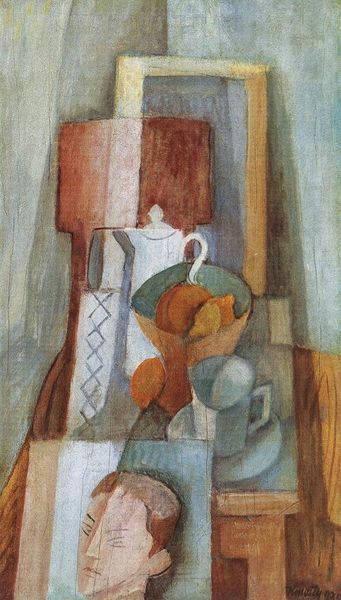
oil-paint
#
cubism
#
oil-paint
#
oil painting
#
modernism
Copyright: Public domain
Curator: Henri Le Fauconnier's 1913 oil painting, "A Still Life with a Carafe and Glasses," presents a compelling example of early cubist experimentation. Editor: My first impression is one of shadowy elegance, the cool grays and blues lending an air of restrained sophistication to what would otherwise be a mundane subject. Curator: I'd say it's a still life grappling with the representational conventions of its time. Le Fauconnier’s work during this period demonstrates how cubism offered artists a language to challenge traditional bourgeois values linked to realism. Editor: Exactly, the deconstruction of form forces us to consider the multifaceted nature of perception, doesn't it? Think about the implied critique of the traditional still life, typically meant to flaunt wealth or domestic harmony, values that are subtly interrogated here. What do you think the social implications are, considering how cubism developed in opposition to established institutions? Curator: He was pushing against the prevailing art establishment through the formal disruptions. Take for instance the fragmented planes and ambiguous spatial relationships: those echo similar fragmentations and shifts in socio-political power underway in Europe at the time, such as changing class structures and rise of avant-garde movements. How else could Fauconnier present the cultural politics? Editor: Interesting points. This fragmented representation really captures a sense of instability and uncertainty that reflected that period. Moreover, objects on display--glasses, carafe and vase -- are all middle-class emblems representing social structures and shifting paradigms and reflecting social and economic transformation occurring at the beginning of the 20th century. The overall visual and material tension points to a much broader tension. Curator: And looking closely, we note that it challenges our perception through the layering of different vantage points, refusing to grant a singular perspective. It reminds us there is not a neutral way to create a picture! Editor: That is right. The politics of looking become explicit in Fauconnier's work. Ultimately, I appreciate how "A Still Life with a Carafe and Glasses" manages to subtly critique and disrupt while maintaining a sense of aesthetic grace. Curator: Indeed, Fauconnier prompts us to question whose perspectives have traditionally shaped artistic representation and the stories they perpetuate through these fractured yet enduring objects.
Comments
No comments
Be the first to comment and join the conversation on the ultimate creative platform.
